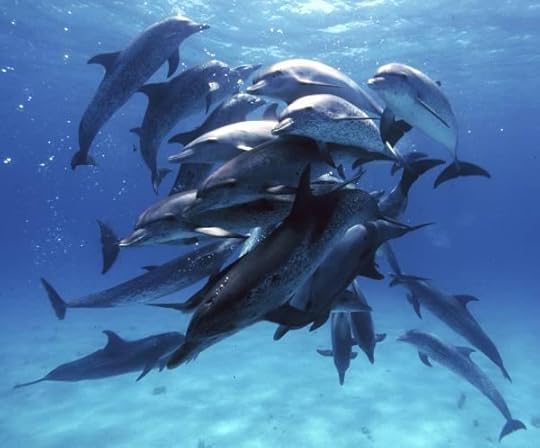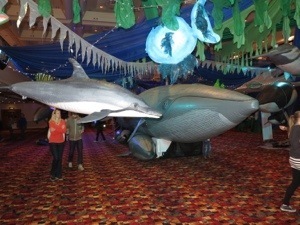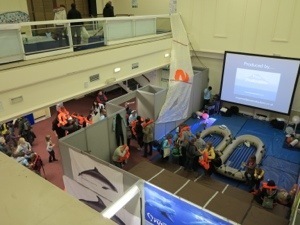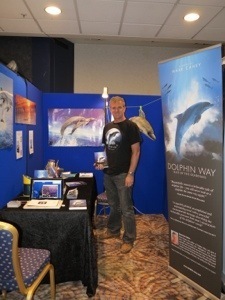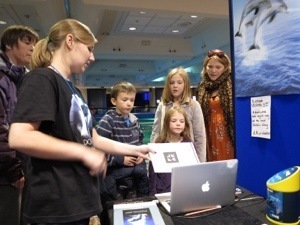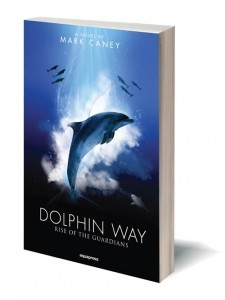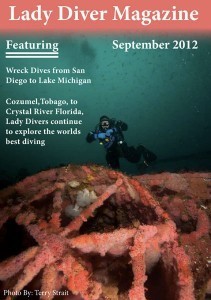Mark Caney's Blog, page 41
November 1, 2012
BBC features dolphins
October 28, 2012
WhaleFest raises awareness of dolphins and whales
WhaleFest started yesterday and continues today in Brighton, England.
This huge event is devoted to raising public awareness of whales and dolphins. The are many educational exhibits including life size whales, information from operators offering the chance to see dolphins and whales in the wild, exhibitions of cetacean themed art, jewellery, books etc.
Many environmental groups were there, including WDC, Sea Shepherd and Project AWARE.
Mark Caney gave a talk on the threats facing dolphins and how he came to write Dolphin Way.
Your browser does not support the video tag
The virtual dolphin was very popular.

October 20, 2012
Mark Caney is at WhaleFest in Brighton
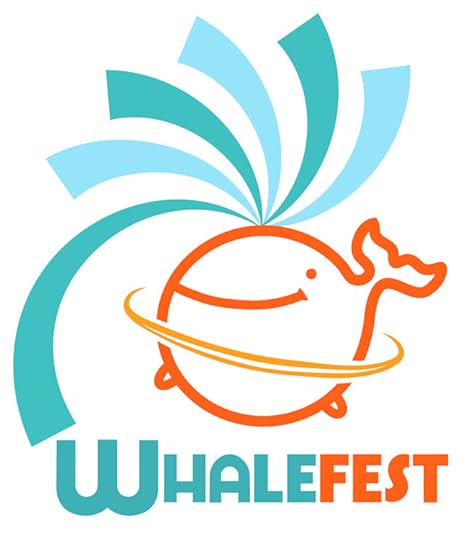
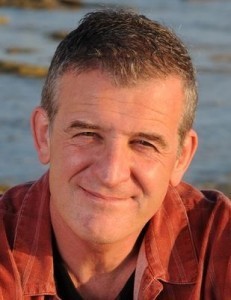 Mark will be at WhaleFest which is being held on the last weekend in October on the south coast of the UK. Mark will have a Dolphin Way stand and will be signing books there on stand number OG 03 in the Oxford Gallery. He will also be giving a short talk about dolphins and the book Dolphin Way: Rise of the Guardians at 4:30pm on Saturday, 27th October at the event in Chamber 2.
Mark will be at WhaleFest which is being held on the last weekend in October on the south coast of the UK. Mark will have a Dolphin Way stand and will be signing books there on stand number OG 03 in the Oxford Gallery. He will also be giving a short talk about dolphins and the book Dolphin Way: Rise of the Guardians at 4:30pm on Saturday, 27th October at the event in Chamber 2.
Opening times WhaleFest:
Saturday 27 October – 9.30am to 5.30pm
Sunday 28 October – 9.30am to 5.30pm
Location: HILTON BRIGHTON METROPOLE

October 17, 2012
Dolphin Way competition
Goodreads Book Giveaway
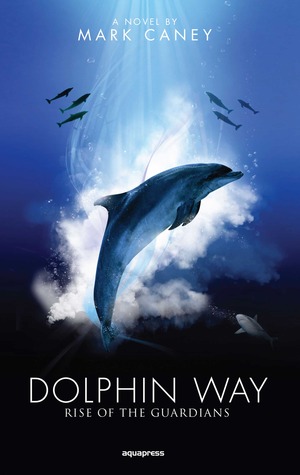
Dolphin Way
by Mark Caney
Giveaway ends November 15, 2012.
See the giveaway details
at Goodreads.
Watch the book trailer

October 16, 2012
World whale and dolphin watch operators to meet in UK
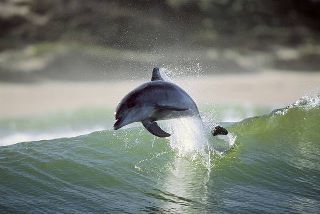 The World Whale & Dolphin Watch Operators Conference will bring together whale and dolphin watching businesses from around the world in an opportunity to form a new alliance, and share ideas and best practice.
The World Whale & Dolphin Watch Operators Conference will bring together whale and dolphin watching businesses from around the world in an opportunity to form a new alliance, and share ideas and best practice.
The conference will focus on helping whale watch businesses to be more sustainable, and more profitable, than ever before.
As part of Planet Whale’s initiative to raise the standards of whale watching worldwide, 12 whale and dolphin watching companies have committed to work in partnership to assist with developing a more responsible and sustainable industry.
Each partner has contributed their expertise to Planet Whale’s 2012 Report on Responsible Whale & Dolphin Watching which will be published for the first time at the conference.
Finally, the conference will celebrate the best operators in the business through a new annual awards ceremony.
Other events during during WhaleFest 2012 week include the first ever World Whale Conference. Open to anyone with a passion for cetaceans, it will involve members of the public, whale and dolphin charities, government agencies, and businesses discussing the best way of working together to implement a global whale-saving campaign.
The World Whale Conference will also include celebrity keynote speakers, as well as the official launch of the Save The Whales: Reloaded campaign. At the end of the conference the attendees will make a public declaration of their commitment to the campaign.
Held at the Hilton Brighton Metropole hotel, WhaleFest 2012 will bring together conservationists, divers, whale and dolphin experts and the public for the world’s largest celebration of wild whales and dolphins in a weekend-long event.
WhaleFest is the culmination of a whole week of WhaleFest Fringe activities which will take place in Brighton between 22-28 October 2012. A host of music, arts and cultural activities themed around whales and dolphins will be available across the city, backed by Visit Britain and Visit Brighton.
Advance tickets to WhaleFest are now available from £9 per adult at http://www.whale-fest.com
Source: Travelmole by Valere Tjolle
(Mark Caney will be attending WhaleFest and copies of Dolphin Way will be available).

Dolphins pass fishing trick from mother to daughter
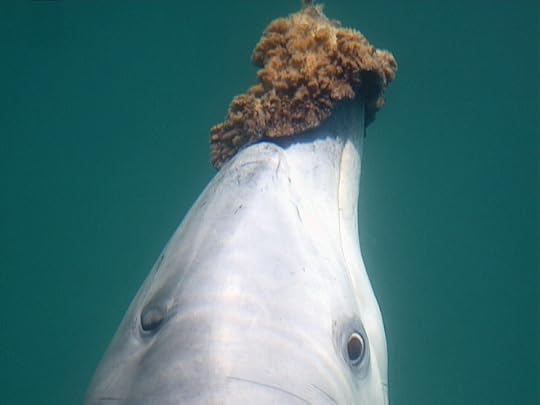 A small population of dolphins in Western Australia state not only use sponges to help catch fish but the rare hunting technique has been passed from mother to daughter for generations, Australian researchers said.
A small population of dolphins in Western Australia state not only use sponges to help catch fish but the rare hunting technique has been passed from mother to daughter for generations, Australian researchers said.
Sightings of dolphins carrying sponges on their snouts to protect their sensitive noses while dislodging fish and crustaceans from the rocky ocean floor has been recorded since the 1980s.
But researchers at the University of New South Wales added a new dimension to their research by using computer modeling of behavior and genetics to estimate how long the technique, which they call “sponging”, has gone on.
“What’s unique about the sponging behavior is that only about five percent of dolphins use the sponges as a tool, and it’s only one maternal line,” said Anna Kopps at the University of New South Wales Evolution Ecologist Research Centre.
“What’s new about this study now is we’ve got the time perspective,” she told Reuters.
Scientists believe one single female started sponging in Shark Bay, Western Australia, and all her descendants in that area learned the behavior from their mothers.
Knowing this, and that the sponging was done 30 years ago, computer modeling allowed them to study the spread of the behavior over the past three decades — and then reverse the process using genetics and behavior to figure out when it might have begun.
Ultimately, they estimated that sponging has been going on for some 180 years, or roughly eight generations of dolphins.
“It’s interesting that the behavior doesn’t spread to the entire population and it doesn’t go extinct either,” said Kopps.
Dolphin offspring are dependent on their mothers for about four years, giving them ample time to observe and learn survival techniques. The maximum lifespan of a dolphin is about 40 years.
“We don’t know if it’s teaching or other forms of learning,” Kopps said.
Full story: Reuters

October 14, 2012
Ukraine resuming dolphin combat training
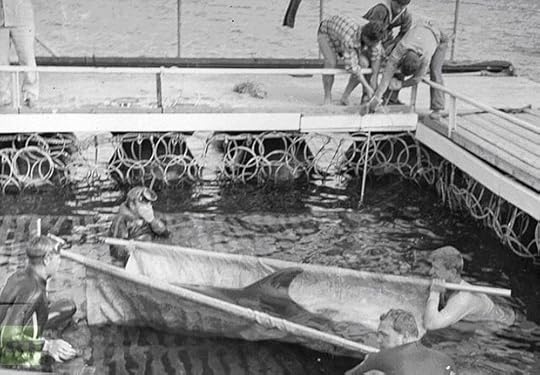 A Soviet program of dolphin military training is reportedly being revived in Ukraine. The unit’s tactical objective will be search operations and patrolling the waters near the Russian and Ukrainian Naval base in Sevastopol.
A Soviet program of dolphin military training is reportedly being revived in Ukraine. The unit’s tactical objective will be search operations and patrolling the waters near the Russian and Ukrainian Naval base in Sevastopol.
In the Soviet Union, dolphin training started in 1965, while a special naval dolphinarium was initiated in 1973 in Sevastopol, the homeport of the USSR’s Black Sea fleet.
Bottlenose dolphins (Tursiops truncates), who naturally inhabit the Black Sea, were chosen as future subversives, set to infiltrate enemy lines, mine warships and counteract military swimmers. For that purpose dolphins were properly armed with knives and underwater pistols fixed on their heads and specially designed baldric for mine carriage.
Later, the center also obtained dolphins of other species, reportedly from the White Sea of the Arctic Ocean and from the Pacific of Russia’s Far East. According to some sources in the Soviet Union, there were specialists training seals, sea lions and even orcas for the same tasks.
Once the Soviet Union split up, Sevastopol’s naval dolphinarium lost state sponsorship and had to survive on its own financing. For dolphins, who sometimes can live as long as 40 years, that probably turned out for the better, as the facility became a rehabilitation center for disabled children. The ironic side was that underwater counter-warfare experts trained to kill spent their retirement years caressing children in return for daily fish rations. But a soldier always remains a soldier, and reportedly some military training continued at the facility through all those years.
Now the time has come for the dolphinarium return to the naval track, as no frogman can beat dolphins in speed, nor underwater wayfaring and, some suspect, even in general intellectual capabilities.
The first unit of ten young dolphins has already successfully fulfilled sea search exams in Kazachiya Bay in Sevastopol, finding items ‘lost’ on the sea bottom and activating mark buoys to signal that the job is done. The next stage of training will see young dolphins learning to patrol a certain water area and protect it from underwater intruders.
There is no information available on whether the dolphins are being trained to kill humans, but reports suggest that all previous attempts to use dolphins for evil purposes had failed, as dolphins are not able to attack people, nor are they ready to sacrifice their own lives.
Full story: RT

October 13, 2012
October 12, 2012
Lonely dolphin tries to get frisky with humans – experts warn of risks
Stinky the dolphin is lonely, and he’s getting way too frisky with humans.
The lone male bottlenose dolphin has been cavorting for months in waters off the Cayman Islands, a rare case of a solo dolphin far from a pod of his fellows.
The sight of the dolphin has delighted many boaters, swimmers and divers, but his antics dismay scientists who traveled to the archipelago to study him. They say Stinky is a danger to humans, and they also worry the dolphin could hurt himself.
“He spent a fair amount of time engaging in very high-risk behavior,” said Laura Engleby, a marine mammal branch chief with the U.S. National Oceanic and Atmospheric Administration. “There is concern for his safety.”
She noted the dolphin has a fondness for boat propellers in motion, and that he also likes to rub against anchors, channel markers and mooring buoys, cutting himself in the process.
Scientists estimate he is roughly 20 years old given his worn-down teeth and aging scars.
“He’s certainly been around the block,” said Trevor Spradlin, a marine mammal biologist with NOAA who also traveled to the Cayman Islands.
It is unusual for bottlenose dolphins to separate from their pods, with only about 30 such cases reported worldwide, scientists said. Also puzzling is how Stinky arrived in the Cayman Islands, given that the nearest pods of bottlenose dolphins are in Cuba and the Bahamas, said Dr. Chris Dold, vice president of veterinary services for SeaWorld Parks and Entertainment, who also studied the dolphin.
Dold said the absence of female dolphins might help explain Stinky’s behavior.
“What’s unusual about this, of course, is not necessarily the behavior that this male dolphin is demonstrating, but that those behaviors appear to be directed toward people,” he said.
Cayman Islands videographer Michael Maes can attest to that.
He was scuba diving with his wife and a friend near Grand Cayman when he spotted Stinky. He tried to catch his wife’s attention to no avail.
“I turned my head away from her and Stinky was there, maybe 15 inches (38 centimeters) away from me,” Maes said. “His eyes (went) straight into my eyes, so I went crazy, like, ‘Hello! There’s a dolphin.’”
He began to film until his wife urged him to surface and leave Stinky alone.
“My wife, he tried to eliminate her,” Maes said. “He charged her like five times, but forcefully.”
The dolphin then tried to mate with Maes, who at one point put his back against a coral wall as he does when sharks approach.
“But a dolphin, he just joins you,” Maes recalled with a laugh.
The incident was caught on a sometimes frightening video that has been viewed nearly half a million times on YouTube.
Maes said he posted the video to warn people to leave Stinky alone. This is not a “swim with the dolphins” sort of animal. He said a few days after his encounter, a woman tried to ride Stinky’s dorsal fin, only to get bitten.
“People just don’t get the message,” he said. “Leave those dolphins alone.”
The Cayman Islands’ Department of Environment has said it will launch an education campaign to highlight that message.
The NOAA biologists urged people to get out of the water if they spot Stinky because they could get injured. The dolphin has demonstrated aggressive behavior such as opening his mouth wide, which some people misinterpret as a welcoming smile that is quite the contrary, Spradlin said.
“He has done jaw pops, tail slapping, chuffing, pushing, charging,” he said. “People need to understand these warning signs.”
Spradlin said that integrating Stinky into a pod of dolphins elsewhere in the region is not realistic because scientists do not know enough about him. There are two types of bottlenose dolphins: those who live near coastal areas and those who live in deep water. It is unclear to which group Stinky once belonged.
“He’s left by himself,” Spradlin said. “He’s been socializing obviously with people and with vessels.”
Local government officials also considered placing Stinky in captivity, especially since the island already has two dolphinariums.
But Engleby rejected that idea, saying it’s best to keep the dolphin in its natural environment.
“A public display would be an option of absolute last resort,” she said. “This situation can be managed as long as people manage their behavior.”
Source: Fox News

October 9, 2012
Society of Lady Divers recommends Dolphin Way
 The Society of Lady Divers is now recommending Dolphin Way on their website, saying, “This book is so unique! It tells a story in the first dolphin. Meaning the story is told through the Dolphin’s eyes. I found it such a great story and all too realistic to our human nature.”
The Society of Lady Divers is now recommending Dolphin Way on their website, saying, “This book is so unique! It tells a story in the first dolphin. Meaning the story is told through the Dolphin’s eyes. I found it such a great story and all too realistic to our human nature.”
There is a Facebook page for the Society with over 5,000 fans and the website has an e-magazine that you can subscribe to for free.


